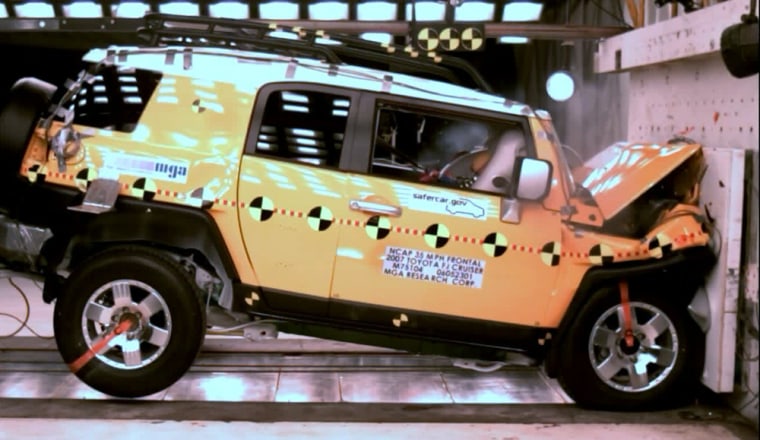The government’s crash-test program should take into account collision avoidance technologies and make the results more meaningful for new car buyers, safety officials said Wednesday.
The National Highway Traffic Safety Administration held a daylong hearing with automakers, suppliers and safety advocates to discuss changes to the New Car Assessment Program, called NCAP, which grades new vehicles on a scale of up to five stars.
Traffic safety officials said the program, started in 1979, has helped speed the implementation of safety technologies into new cars. But they want to improve frontal, side-impact and rollover testing while measuring emerging technologies such as electronic stability control, which is used to prevent rollovers, lane departure warnings and brake assist systems.
“We do know the program works and it’s clear that safety sells,” said NHTSA administrator Nicole Nason. “Vehicle design and safety improvements are not static concepts and so NCAP should not be, either.”
Automakers and suppliers said the changes should reflect the benefits of electronic stability control, which the government has proposed requiring on all new vehicles beginning in 2012.
“There are tremendous opportunities to help drivers avoid the crash in the first place,” said Robert Strassburger, vice president of safety for the Alliance of Automobile Manufacturers.
The government has predicted that stability control could prevent thousands of roadway deaths a year if the technology is fully deployed into the fleet. Automakers said the new system needs to help consumers learn which systems provide the greatest level of safety.
“Right now everyone’s a little uncertain on which ones work best,” said Chuck Thomas, an automotive safety manager with Honda Motor Co.
Safety advocates noted that most vehicles earn four or five stars on the tests, making it difficult for consumers to compare the safety value of similar vehicles.
In 1979, for example, nearly half the new vehicles received one or two stars, the two lowest ratings, but none of the new cars got those scores in 2007. About 95 percent of current vehicles receive four or five stars.
“The star system today does little to differentiate vehicles,” said Jack Gillis of the Consumer Federation of America, who said the grading system suffered from “star-flation.”
NHTSA has also discussed improving its front-end test to rate vehicles on their ability to prevent upper leg injuries and on the side test to show how side air bags protect the driver’s head.
Safety groups said the government should also test child restraint systems to see how they hold up in crashes. The child seats are currently rated by NHTSA on how easy they are to use, but advocates said they should follow similar programs in Japan and Europe that offer safety ratings for child seats.
“America’s children deserve the same protection as European children,” said Martha Bidez, an Alabama-based safety engineer.
